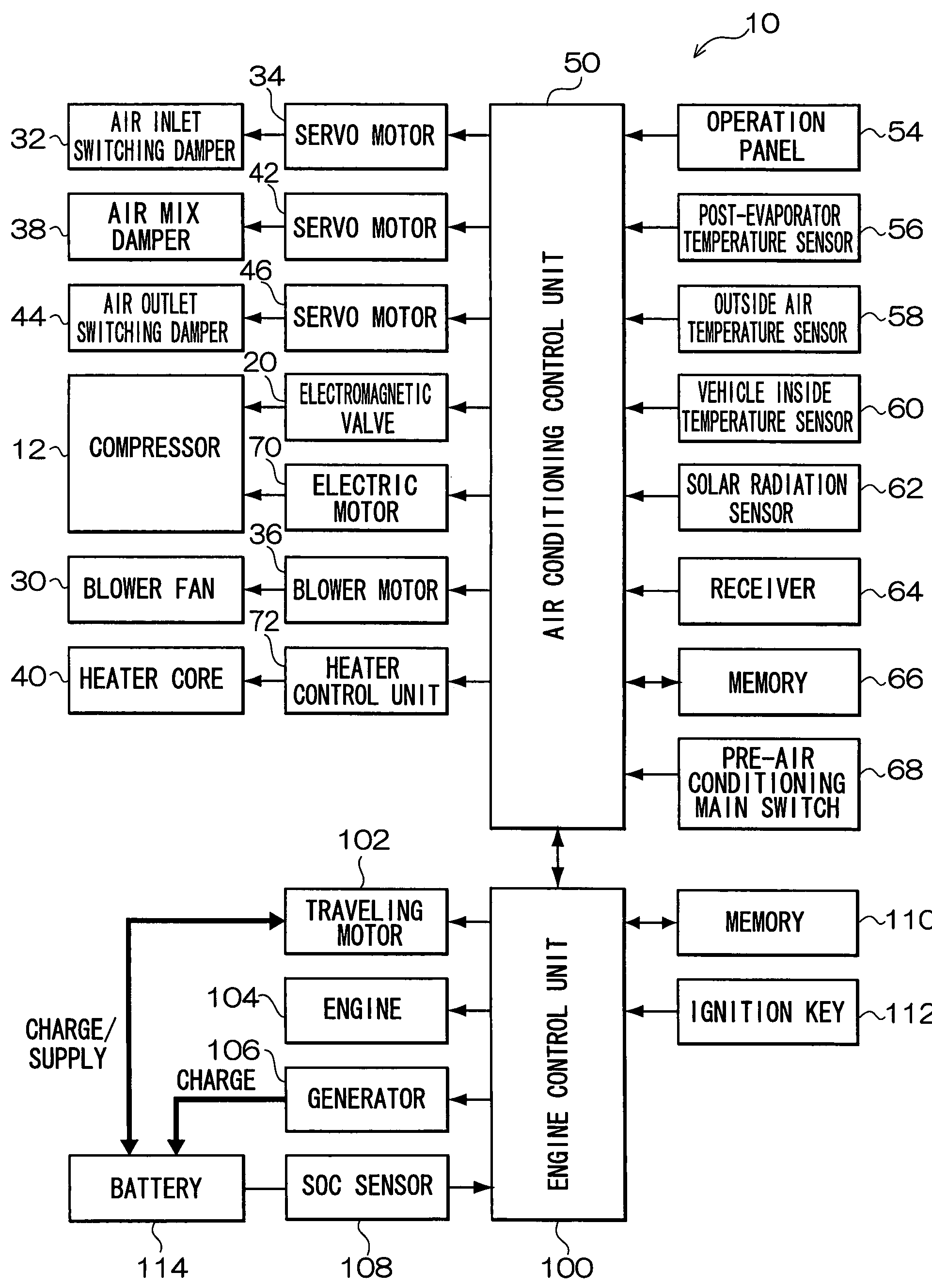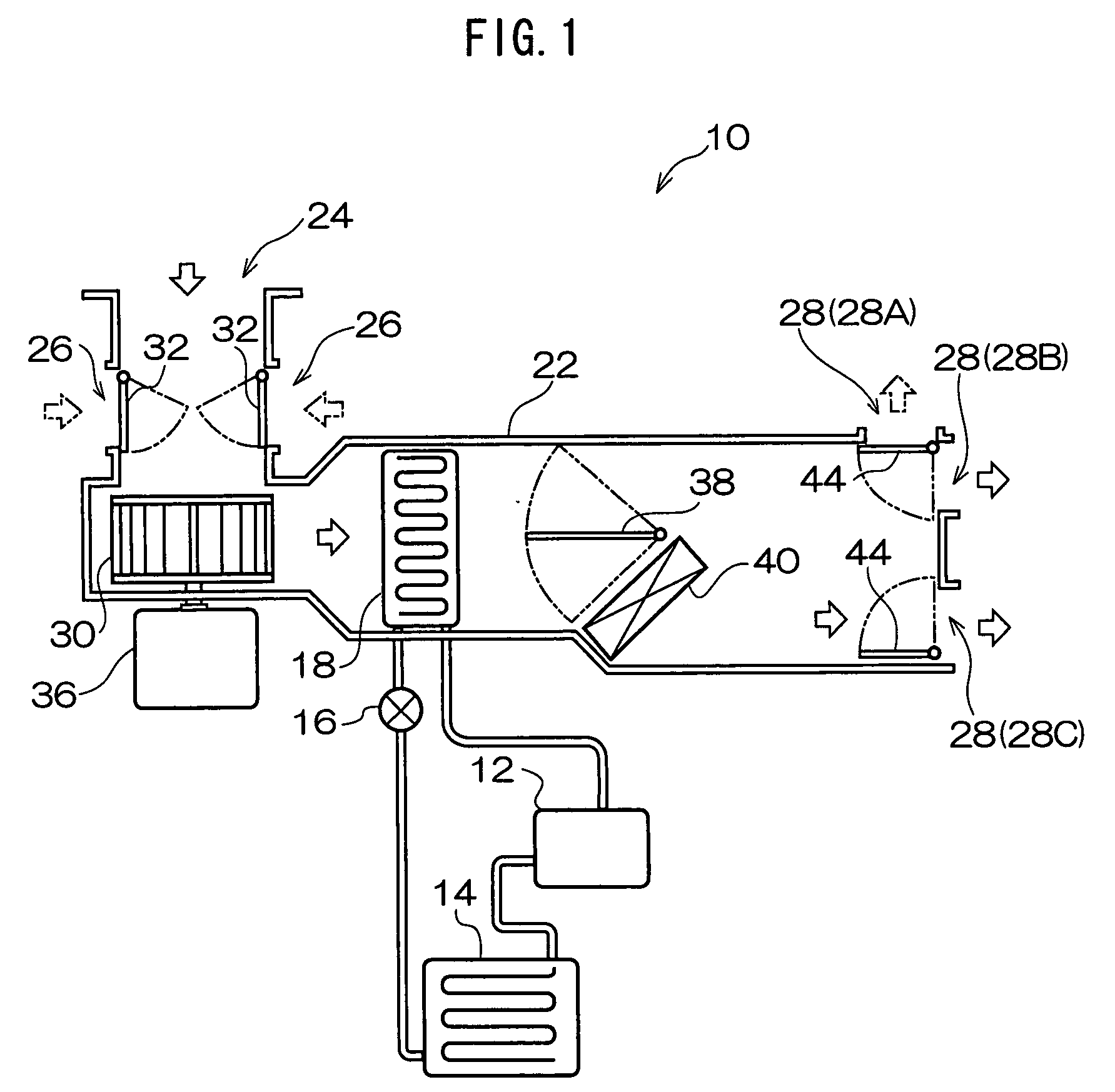Air Conditioner for Vehicles
a technology for air conditioners and vehicles, applied in the direction of lighting and heating apparatus, transportation and packaging, instruments, etc., can solve the problems of reducing preventing pre-conditioning execution, and occupants of vehicles being unable to operate pre-conditioning even if, so as to increase the probability of pre-conditioning being executed, reduce the cost of the device, and increase the effect of occurren
- Summary
- Abstract
- Description
- Claims
- Application Information
AI Technical Summary
Benefits of technology
Problems solved by technology
Method used
Image
Examples
first embodiment
[0032]Hereafter, an example of a first embodiment of the invention will be described in detail with reference to the drawings. In this embodiment, a case in which the invention is applied to a hybrid vehicle that uses an engine and an electric motor as a driving source is explained.
[0033]FIG. 1 shows the overall structure of a vehicle air conditioner 10 according to this embodiment of the invention. As shown in FIG. 1, a refrigeration cycle of the vehicle air conditioner 10 is structured by a refrigerant circuit which includes a compressor 12 as a compressing unit, a condenser 14 as a condensing unit, an expansion valve 16 as a decompressor, and an evaporator 18 as an evaporating unit.
[0034]For example, when an engine of a vehicle is in operation, the compressor 12 is driven by power from the engine transmitted via a belt (not shown). When the engine is not in operation, the compressor 12 is driven by power from an electric motor 70 (refer to FIG. 2). The compressor 12 compresses a ...
second embodiment
[0097]Next, a second embodiment of the invention will be explained. Note that the same structural members as in the first embodiment are denoted with the same reference characters and a detailed description thereof is omitted.
[0098]FIG. 6 shows a block diagram of a vehicle air conditioner 11 of the present embodiment. The vehicle air conditioner 11 differs from the vehicle air conditioner 10 in FIG. 2 only in that the pre-air conditioning main switch 68 is not provided but a timer 69 is provided. The rest of the structural members have similar configurations as those of the vehicle air conditioner 10, and thus a description thereof is omitted.
[0099]Next, a control routine executed by the engine control unit 100 is explained referring to a flowchart shown in FIG. 7. Note that a process not included in the flowchart of FIG. 4 is denoted with ‘A’ at the end of the step number.
[0100]As shown in FIG. 6, the only process that differs from the control routine shown in FIG. 4 is the process...
PUM
 Login to View More
Login to View More Abstract
Description
Claims
Application Information
 Login to View More
Login to View More - R&D
- Intellectual Property
- Life Sciences
- Materials
- Tech Scout
- Unparalleled Data Quality
- Higher Quality Content
- 60% Fewer Hallucinations
Browse by: Latest US Patents, China's latest patents, Technical Efficacy Thesaurus, Application Domain, Technology Topic, Popular Technical Reports.
© 2025 PatSnap. All rights reserved.Legal|Privacy policy|Modern Slavery Act Transparency Statement|Sitemap|About US| Contact US: help@patsnap.com



